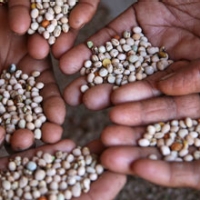World Bank Group Support to Small States
Small States face unique development challenges. Their small population and economic base make them particularly vulnerable to external shocks like economic crises, commodity price fluctuation, natural disasters, and climate change. Limited economic opportunities contribute to high migration, which in turn exacerbates capacity constraints by reducing the skilled workforce available for development.
The Small States Forum (SSF) is an important platform for high-level dialogue on how the World Bank Group is helping to address Small States’ special development needs. The SSF comprises 50 members, including 40 countries classified as Small States according to the World Bank Group definition (i.e., those with a population of 1.5 million or less) and ten other Small States Forum members with a population greater than 1.5 million that share similar challenges.
Although Small States share common challenges related to their small economies and vulnerability to external shocks, the SSF is a highly diverse group. Members vary widely in population size, income levels, geography, and other features, leading to a broad range of development outcomes:
Population: Population size ranges from 11 thousand people in Tuvalu to 2.8 million people in Jamaica. Eight SSF members have population below 100,000.
Geography: SSF countries are distributed across all regions and about two-thirds are island states. The remaining one-third includes five land-locked countries (Bhutan, Botswana, Eswatini, Lesotho, and San Marino).
Remoteness: Several SSF countries, particularly islands, are among the most remote in terms of distance to the nearest international markets (e.g., Pacific islands).
Land Area: A number of island states have a very small land area (e.g., Nauru has 21 square kilometers), while non-island states such as Namibia and Botswana have 3 and 2.1 times the area of all small island states combined, respectively.
Fragmentation and Dispersion: Some countries are archipelagos dispersed over a broad ocean area (e.g., Kiribati has an area of 810 square kilometers distributed in 35 atolls/islands spread over 3.6 million square kilometers of ocean).
Vulnerability to Natural Disasters and Climate Change: Many SSF countries are highly vulnerable to natural disasters such as hurricanes, cyclones, rising sea levels, and droughts, all of which are exacerbated by climate change.
Debt Burden: Frequent natural disasters and weak fiscal management have contributed to significant debt accumulation in Small States, particularly in tourism-dependent countries Public debt to GDP ratios for Small States are on average higher than for other developing countries, but they vary significantly across countries from single digits (Tuvalu and Brunei Darussalam) to over 100 percent (Barbados, Bhutan, Cabo Verde, Dominica, Maldives and Suriname).1
Vulnerability to Global Crises: The economic fallout from the COVID-19 pandemic has been more severe in Small States than in other developing countries. The pandemic exacerbated already high fiscal imbalances and debt vulnerabilities in many Small States, although outcomes vary across countries. Relative to 2019, debt to GDP ratios increased by 10 percentage points or more in around one-third of Small States. In addition, higher fuel and food prices in the wake of the Russian invasion of Ukraine have further undermined the sluggish post-COVID-19 recovery of Small States’ economies. High inflation has also resulted in higher international borrowing costs disproportionately affecting highly indebted Small States.
[1] IMF 2022


